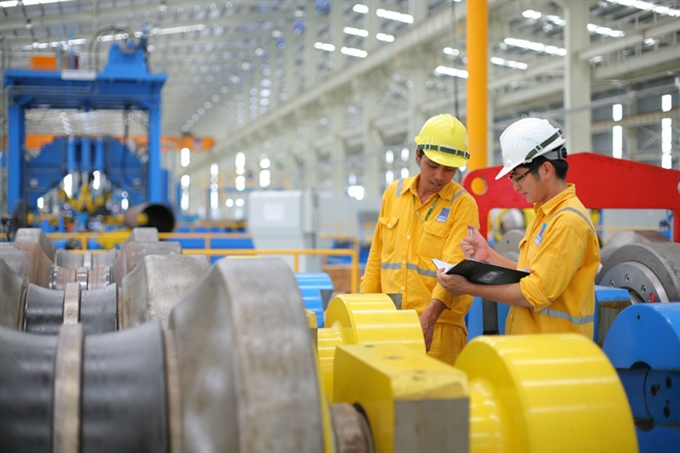 Economy
Economy

Việt Nam’s GDP growth is forecast to be robust in 2016 and 2017, possibly outperforming other countries in the region, according to international banks.
 |
| In a report released last week, ANZ expects Việt Nam’s GDP to rise 6.9 per cent in 2016 and 6.5 per cent in 2017. — File Photo |
HÀ NỘI (VNS) — Việt Nam’s GDP growth is forecast to be robust in 2016 and 2017, possibly outperforming other countries in the region, according to international banks.
In a report released last week, ANZ expects Việt Nam’s GDP to rise 6.9 per cent in 2016 and 6.5 per cent in 2017.
“Yet we acknowledge the downside risks emanating from the contraction in agricultural output. Global expectations for rice output are not promising, weighing on agricultural exports,” the ANZ report says.
Early last week, Asian Development Bank (ADB)’s growth forecast for Việt Nam’s GDP was robust, with predictions of 6.7 per cent in 2016 and 6.5 per cent in 2017.
Credit Suisse last week also said that Việt Nam’s GDP would rise 6.3 per cent next year, the third-fastest in emerging market economies after China (6.6 per cent) and India (7.8 per cent).
Credit Suisse said Việt Nam’s growing popularity as a global manufacturing hub was one of the reasons for the growth.
“As labour costs have risen dramatically in China over the last several years, a growing number of manufacturers have moved operations from the Middle Kingdom to Việt Nam, or have even decided to set up shop there in the first place,” Credit Suisse said.
Credit Suisse also expects Việt Nam’s export growth to moderate slightly from 7.1 per cent in 2015 to 6.9 per cent in 2016 due to a recent slowdown in the United States and China’s declining appetite for imports while total foreign direct investment (FDI) reaches US$13 billion, down from a spectacular $14.5 billion in 2015.
“The manufacturing sector, which accounts for 24 per cent of Viet Nam’s GDP, attracted 57 per cent of the FDI inflows last year. The country stands to gain even more investment from the Trans-Pacific Partnership, a free-trade agreement among 12 countries,” Credit Suisse said.
However, according to Credit Suisse, the Vietnamese equities market still has its challenges, such as liquidity, a relatively small number of listed firms, and limits on foreign ownership.
The bank’s equities analysts are also more cautious on credit-related assets, including banks and real estate companies. An increase in non-performing loans in the wake of a credit-fuelled property bubble over the last five years has put pressure on banks’ capital ratios. If lending continues at the pace of the last several years, four of the six largest banks will have capital adequacy ratios of less than 10 per cent by the end of 2016. — VNS




